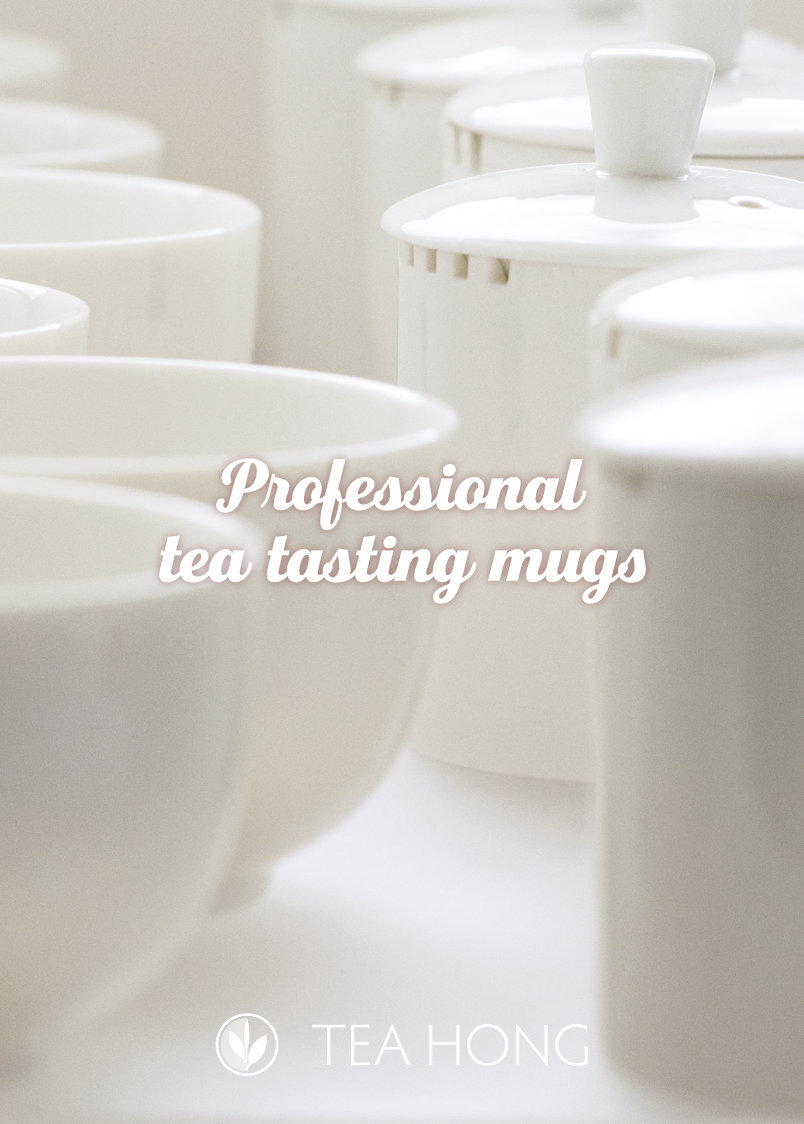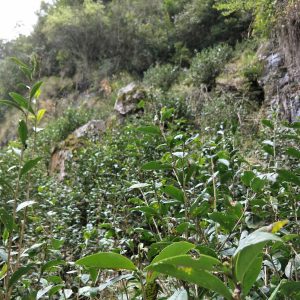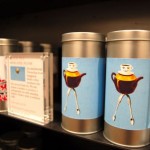Quality Basics 2: The Production Process
- Leaves piled in rows waiting to enter a premium green tea processing factory. Withering happens at the same time, so do other bio-chemical changes because of the heat and higher humidity inside the thick piles.
- The tea master turns the young leaves lest they get too warm in the centre of the pile. Bio heat causes unwanted chemical changes in the leaves that can taint the taste. Evenness in dehydration also means even changes in subsequent processing. This is critical in clarity in taste.
the making that makes the difference
Very often one would hear that the different kinds of tea is a result of different degrees of fermentation. This is only partially true. Take oolongs for example. While oolongs are partially fermented teas and black teas fully fermented ones, oolongs are not made in the same method as that of the latter by simply halting the fermentation midway. The process is entirely different. In fact, the concepts of processes for making various categories of teas are all different, and within each categories, further variations in styles and practices. That is why we can be indulged with the richness of taste varieties and huge selections in the much taken for granted item that is called tea.
Even the most straight forward concept of green tea making varies dramatically from one making style to the next. For example, a green tea can be roasted, as in Longjing, or it can be steamed, as in Gyokuro. The two teas not only taste very differently, but also carry different health characters, suiting varying occasions and body conditions. Such differences exemplify in the category of oolongs and teas we generally refer to as puers.

Mass production brings about standardization. Sadly the lowest denominator wins most of the time. The mass is thus confined to standard qualities.
differences in production parameters yield different quality
One factor is the growing environment. High altitude, with relatively more extreme temperatures, allows for slow growth and concentration of taste substances in the leaves. So are steep slopes, sandy acidic soils, and restricted exposure to sun-light. Misty micro-climate and medium amount of rainfalls are also associated with better quality.
First-flushes, i.e. the first plucks of the year in Spring, are premium in taste and salutary qualities for greens, whites, and oolongs. (However, oolongs are plucked when the leaves are more grown than green and white teas.) Second flushes, (some argue one and a half flushes) yield black teas of fuller tastes.
immediate attention to the plucks
Immediate attention to the plucks maintains the maximum quality potential of the leaves than if letting them piled up in the bushels for waiting; etc. That is why most really fine teas are not from big factories but from smaller producers. In really fine productions, even the time of the day and weather condition during the plucking are crucial factors for quality differences between a good tea and the finest.
We have not yet touched the way the plucked leaves are processed. The crafts and disciplines in traditional manual productions and how they are adapted in small scale mechanized productions in some regions are critical to the quality of the final products. They will be discussed in separate essays.

Old Master Wen checking a step in oolong making by way of smell. Finnese in mastery of production is crucial because each batch of plucks can be quite different. The weather, the pluck time, and changes in the growing environment all affects the composition of the leaves. Quality is thus determined by correspondent adaptation during the making process.
While there is on one hand this traditional mode of production which quality relying heavily on the individuality of the local horticulture and specialized skills of the independent small producer, there is on the other hand the majority mass production which quality is unified for standardizable grades — grades that can be used to label productions of as different as China and Kenya. More about this grading system is presented in the next page in this essay, but we shall briefly discuss one reason why in some tea area the tea economy flourish, while in others the workers so impoverished.
individuality vs mass
The opposing concepts in these two tea production approaches remind me of the difference between coaching or mentoring the young minds as in the ancient classic times, and mass education in the contemporary society, the latter of which the educator/writer Sir Ken Robinson has perceptively equated as the fast food model. The similarity of young people with diverse talents and tea as a diverse plant, both needing individualized attention to bring out the best, should tell of a solution to the economic structure of the mass tea trade (more in another essay). As Robinson urges education “to move away from what is essentially…a manufacturing model, which is based on linearity, conformity, and batching people” to models customized to “local circumstances”, so as to “personalize (the education) to the persons (being taught)” and “create a condition they can actually flourish” (2), the tea trade should really look at what really is good for both the consumers and the trade itself, in the long term. »read on












